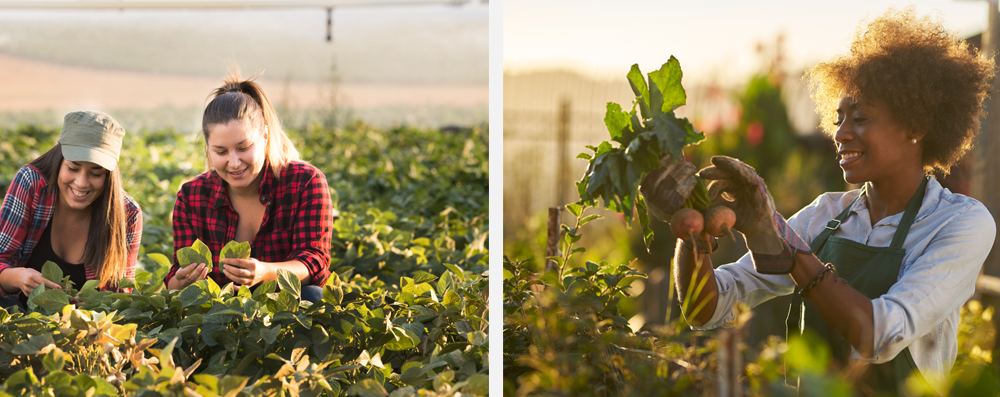Several years ago I used Lavandula angustifolia "Hidcote Blue" (Hidcote Blue English Lavender) as a unifying hedge in a Parterre Garden at one of the properties that I had designed and developed. The four quadrants surrounding a beautiful piece of sculpture had the following general types of perennials in each section:
- A white garden.
- A garden with blues and pink colours.
- A "hot" garden with reds, oranges, and yellows.
- A herb garden.
The unifying element in this landscape was the lavender hedge. Cut back hard to a pincushion early in the spring once new growth is initiated, Lavender develops into a beautiful, informal herbaceous hedge. It would be an appropriate plant to use for this purpose where climatic circumstances permit.
Karen Michauds' article is as follows:
With the resurgence of interest in herbs for culinary and medicinal uses, homeowners are interested in growing these fascinating plants in their own gardens. Herbs have the versatility to be a plant to flavour soup or to become a soft, grey-leaved addition to provide interest in the landscape.
Historically, herbs have been used in kitchen gardens and complex knot gardens and have been separated from the rest of the garden. With their myriad of colours, textures and scents, they can transform the atmosphere of residential and public spaces into significant areas of interest.
What exactly is a herb? The dictionary defines a herb as a plant with a succulent stem that dies down each year, especially those used for medicines and flavouring. The Herb Society of America defines a herb as a plant "for use and for delight". We can categorize herbs into smaller groups such as: culinary plants (Dill and Sage), tea plants (Lemon balm and colourful Bergamot), scented plants for potpourri (Lavender and old Roses), silver leaved herbs (Artemisia and Lamb's Ears) plus all the herbs that are used medicinally including Foxgloves and the popular Echinacea. Herbs are becoming more available and many plants that are not always recognized as herbs have been in our gardens for years.
My own display Herb Garden is filled with well over two hundred types of herbs for fragrance, flavour, texture and their ability to attract butterflies. The plants range in size from tiny-leaved ground covers to colourful perennials that spill out onto the pathways to large shrubs and even trees.
Good landscapers know their plant material, so become familiar with these wonderful plants and include them in garden design.
Ground Covers
The low growing Thymes fill in nicely around stone pathways. Mother of thyme (Thymus praecox) and Purple creeping thyme (Thymus serphyllum) are best in full sun and will climb over small stones and give off a pungent odour when leaves are crushed underfoot. Cunningham mint (Mentha pulegium sp.) will form a large mat that will take light foot traffic. Sweet Woodruff (Galium odoratum) and Sweet violets (Viola odorata) thrive in shade under tall trees. Moneywort (Lysimachia nummularia) and Dead nettle (Lamium maculatum) will cover ground quickly! There is enough variety among these herbal ground covers to provide splashes of colour and interesting textures throughout the garden.

A wonderful setting for a herb garden.
Edging and Hedging
Edging plants soften hard lines and are at their best spilling out onto walkways and framing entrances. Some of the best are Lady's mantle (Alchemilla mollis) with rounded leaves and chartreuse flowers, Garden thyme (Thymus vulgaris) and Lavender (Lavandula angustifolia), which provide fragrance when brushed. Small hedges are useful to define or mark boundaries. These plants will stand clipping, but once a season is usually enough to keep them tight. Hyssop (Hyssopus officinalis), Winter savory (Satureja montana) and the more common Santolina Sage (Santolina chamaecyparris) make small neat hedges and are often used in knot gardens.
Colourful Borders
Herbs are so much more than green plants. With the variety of flowers and season of bloom herbs will add colour and fragrance throughout the growing season.
Spring
The fresh flowers of Viola odorata, Galium odoratum, Myrrhis odorata (Sweet cicely), Primula veris (Cowslip) and Lamium maculatum bring life back to the garden after the winter. These plants mix well with spring bulbs.
Early Summer
Feverfew (Chrysanthemum parthenium), Alchemilla mollis, Lavandula angustifolia, Showy catmint (Nepeta mussini).
Mid summer
Yarrow (Achillea millefolium, Achillea filipendula), Bergamot (Monarda didyma, Monarda fistulosa), Echinacea purpurea, Milkweed (Asclepias sp.), Oregano (Origanum vulgare).
Late summer to fall
Fennel giant hyssop (Agastache foeniculum), Great lobelia (Lobelia siphilitica), Tansy (Tanacetum vulgare), Elecampane (Inula helenium), Ghost wormwood (Artemesia lactiflora).
Edible Flowers
Many easy to grow annuals produce colourful edible flowers. Borage (Borago officinalis), Calendula or pot marigold (Calendula officinalis) and Nasturtium (Tropaeolum majus) are best grown by direct seeding.
Vines
Hops (Humulus lupulus), Trumpet Vine (Campsis radicans), Bittersweet (Celastrus scandens) and Honeysuckle (Lonicera sempervirens) are all vigorous herbal vines. They produce interest throughout the growing season. Stand back when Hops vines are growing. They grow over anything in their path.
Foliage
Herbs have very interesting foliage colours and textures.
Silver or Grey
Artemisia Silver Queen or King (Artemisia ludoviciana var. albula), Lavandula, Horehound (Marrubium vulgare) and Lamb's Ears (Stachys byzantina).
Grey-Green
Southernwood (Artemesia Abrotanum, Artemisia camphotata, Artemisia. procera), Sage (Salvia officinalis) and Nepeta X fassenil.
Blue-Green
Rue (Ruta graveolens), Chives and Garlic (Allium sp). Rue can cause skin reactions so keep it away from pathways. Dark green curly Parsley adds interest to plantings.
Fern-like
Dill (Anethum graveolens) and Fennel (Foeniculum vulgare). A red, purple or bronze Fennel is also available.
Coloured
Purple Basil (Ocimum 'Opal' or 'Red Rubin') dark purple Perilla (Perilla frutescens 'Atropurpruea') Purple Sage (Salvia officinalis 'Purpurascens'), Gold sage (Salvia officinalis 'Icterine') and Tricolour Sage (Salvia officinalis 'Tricolor')
Shrubs
Many shrubs can be included in a herbal landscape. Witch Hazel (Hamamelis virginiana), Boxwood (Buxus sp.), Carolina allspice (Calycanthus floridus), Oregon grape holly (Mahonia aquifolium), Mock orange (Philadelphus coronarius), and Rugosa rose (Rosa rugosa).
Trees
Trees with medicinal or economical use can also be considered herbs. Sugar maple (Acer saccharum), Serviceberry (Amelanchier alnifolia), Sweet birch (Betula lenta), Quince (Cydonia sinesis), Maidenhair tree (Ginkgo biloba), and Osage orange (Maclura pomifera).

A creative use of herbs in the garden.

A herb garden enclosed by a low wooden fence.
References
Gardner, Jo Ann. Herbs in Bloom. Timber Press, Oregon, 1998
Kirkpatrick, Debra. Using Herbs in the Landscape. Stackpole books, Harrisburg, 1992
As an interesting editorial sidebar, the author of this weeks article on "Landscaping with Herbs" used to be a student of mine when I taught Ornamental Horticulture at the Nova Scotia Agriculture College in Truro, Nova Scotia. Karen at that time and to this day expressed interest in the creative use of herbs in the contemporary landscape. Karen is not only a graduate of the N.S.A.C but is also a graduate of the Niagara Parks Commission School of Horticulture. She runs a business called Country Lane Herbs that is located in Puslinch, Ontario. She offers tours of her herb garden, herbal workshops, and sells potted herbs, dried herbs, and potpourri supplies.

Karen Michaud in her garden.
Karen Michaud may be contacted at:
- Country Lane Herbs, R.R 3, Puslinch, Ontario N0B 2J0
- Phone and Fax: 905-659-7327
- E-mail: paul.michaud@sympatico.ca




